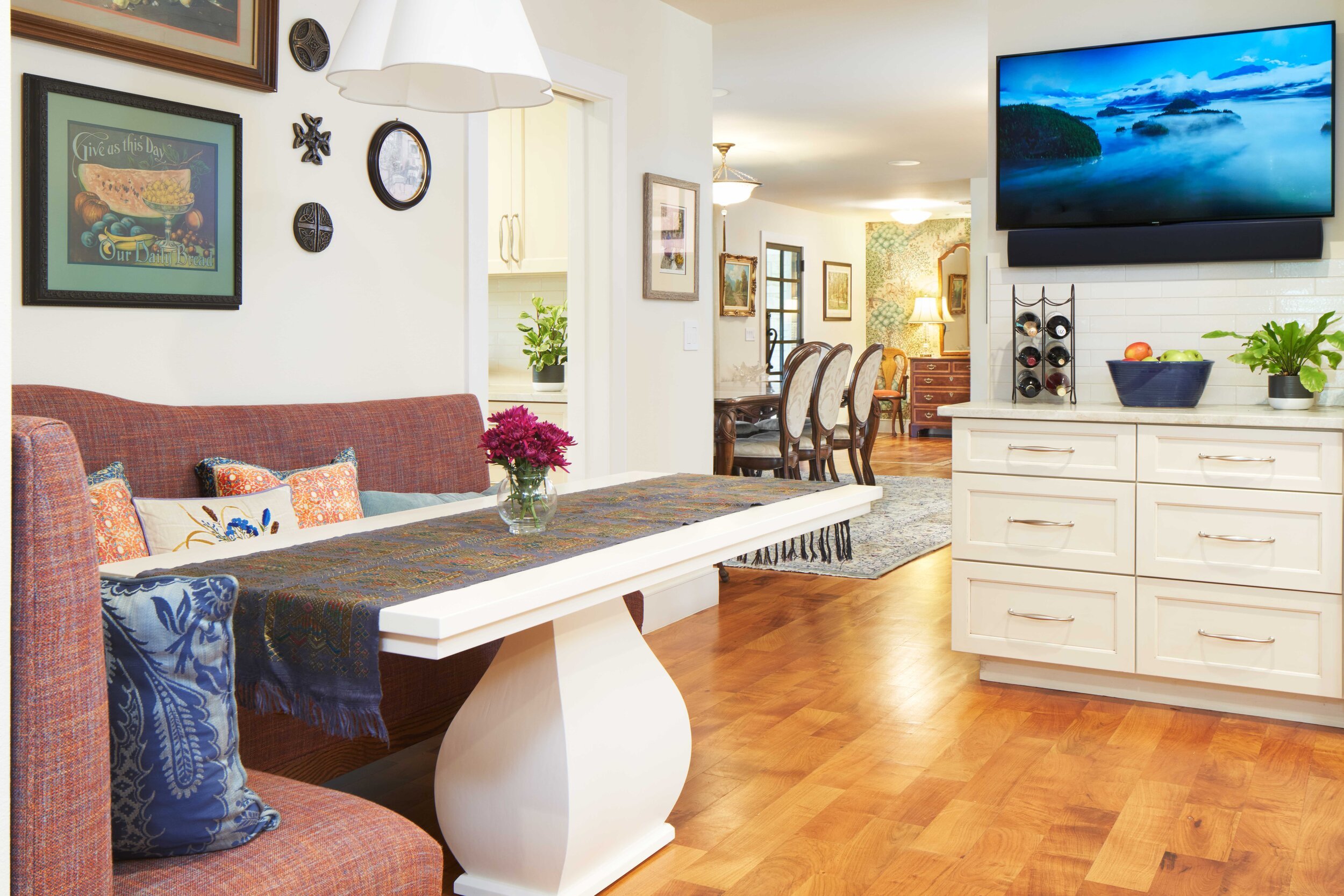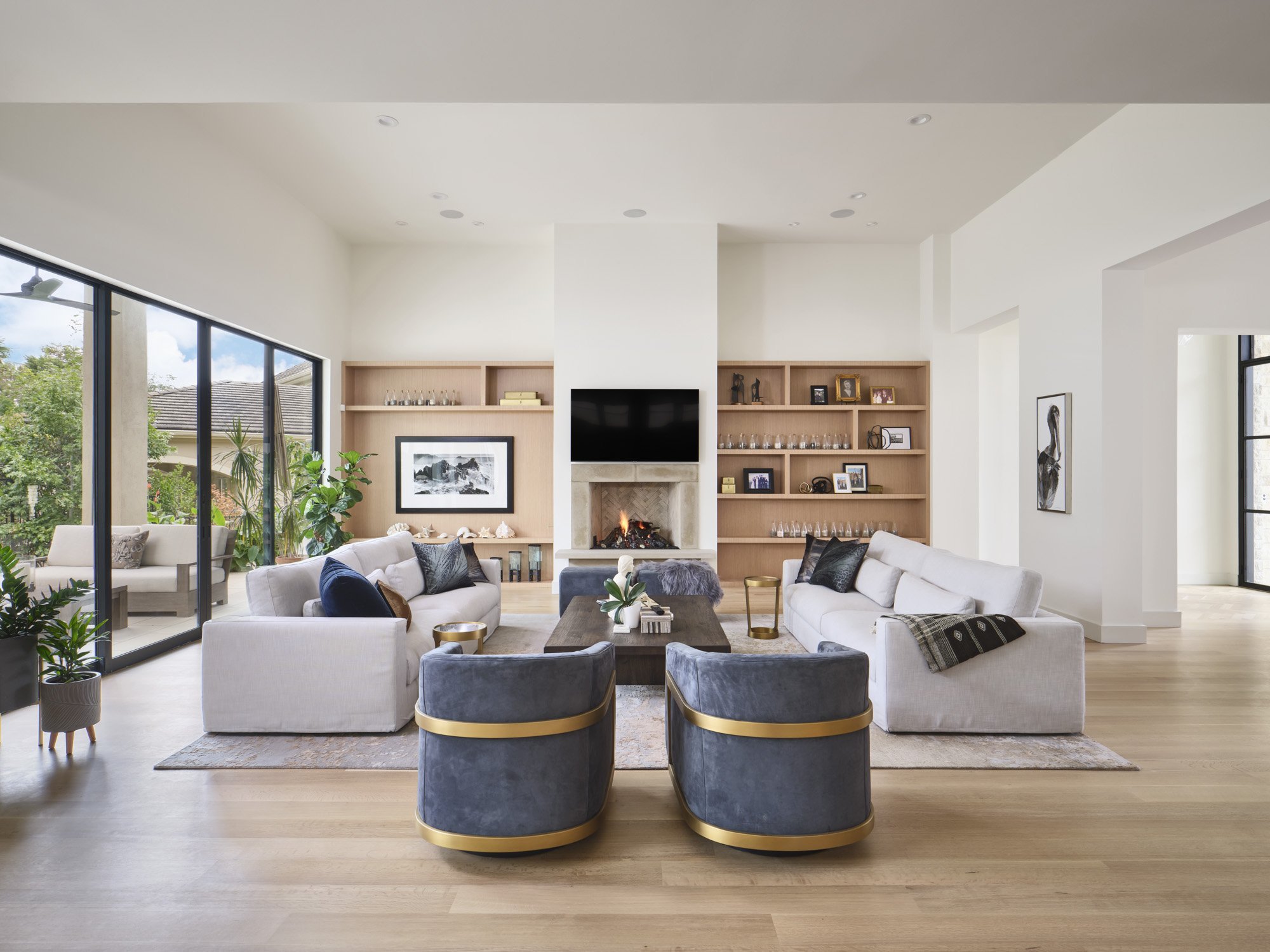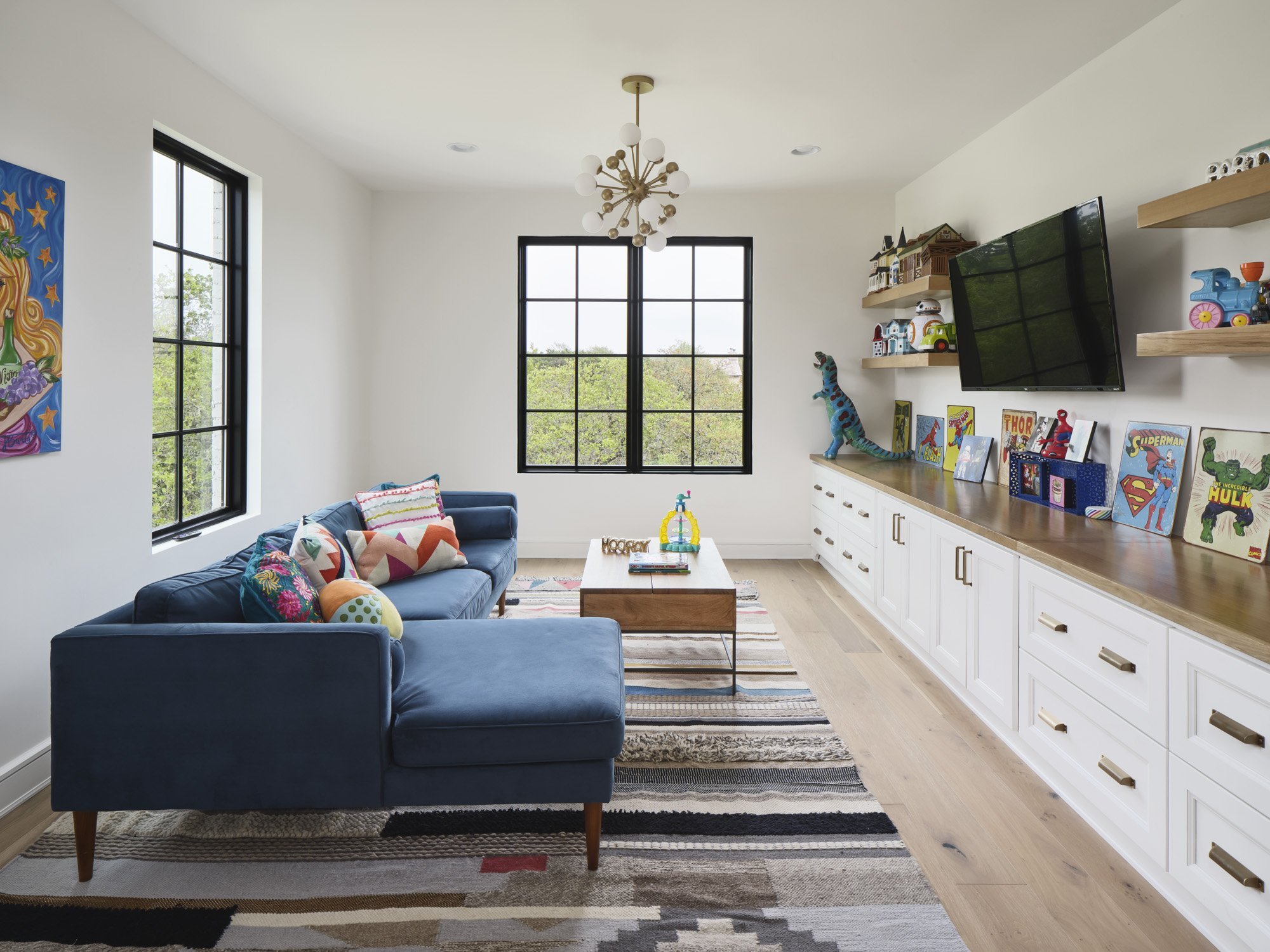How to Design a Smart Home
Our Austin Architects Share What You Need to Include in Your Smart Home Design and Considerations Before Installation Day
Hey, Google. How do you design a smart home? More and more home gadgets are popping up on the market as smart home technology advances. Turning on your lights with a voice command and locking your door from across town via your phone are just some of the modern conveniences available — with the right architectural planning, of course! Trying to wire your home for speakers and automated window shades after your walls have been painted and trim has gone up can feel more stressful than a computer crash. Our Austin architects explain how to design a smart home, sharing what to include in your smart home design and considerations before installation day. Let the information download commence!
What to Include in a Smart Home Design
Smart Home Items By DK Studio
1. Security Systems
One of the first things our Austin architecture clients ask about when it comes to smart home design is security systems. New smart security systems include motion sensors, window and door protectors, and high-resolution cameras that allow you to check in on your home directly from your smartphone. Some indoor pet cameras even include a speaker for you to talk to your pet when you’re out of town. With smart security monitoring, you can easily check in on your home and access video footage when you need it.
2. Smart Locks
Smart locks are an extension of smart home security systems. They allow you to set unique passcodes and timed entry for guests, and they give you the ability to lock or unlock your door directly from your phone — no matter where you are in the world. Smart locks are incredibly convenient when you have pet sitters, cleaners, or handypersons who need to access your home when you’re away. (They also come in handy when you forget to lock the door.)
3. Doorbell Cameras
Smart doorbells equipped with cameras allow you to view who’s at the door. With motion sensor alerts, you can know exactly when your package arrives. Additionally, you can screen and even talk to people via your doorbell camera before you choose to answer.
4. Home Hubs and Displays
With smart home hubs like Amazon Echo and Google Home, you can control your smart home with simple voice commands. If you walk into a dark home with your hands full, simply ask your home to turn on the lights like you would a person. Some home hubs also come with display screens, allowing you to access music, internet browsing, recipe cards, and video calls with the touch of a finger.
5. Speaker Systems
If you’re a family of movie buffs or love getting the party started with your favorite tunes, you must include a speaker system in your smart home design. Wiring for speakers early in construction will allow you to stream music through your home or build the ultimate media room.
6. Smart Lighting
Smart lighting has made significant advancements since the “Clap On! Clap Off!” era. Today, smart LED lights give you the power to control your home lighting with your smartphone or voice. Some smart lighting packages even track your habits to anticipate when you need the lights to come on! Dim and change color temperatures with ease, setting the mood for parties or creating bright task lighting.
7. Automated Window Coverings
Imagine waking up in the morning to your drapes automatically opening to reveal the bright sunny day ahead. Pre-wiring your home for automated window coverings gives you the ease of opening and closing your shades from your smartphone or programming them to automatically adjust to the shifting sun throughout the day.
8. Smart Thermostats
Smart thermostats are another popular smart home upgrade among our Austin architecture clients, especially since Texas summers get pretty toasty! Smart thermostats help you save on air conditioning energy costs by giving you the power to adjust the temperature from your smartphone and learning your habits to change on their own.
9. Remote Sprinkler Systems
We’ve all seen timed sprinkler systems going off during a rainstorm and thought, “What a waste of money!” Smart remote access sprinkler systems ensure your lawn stays green without throwing money down the drain. Get sprinkler updates along with the weather and easily switch them off before the rain comes.
10. AV Closet
Every smart home needs a command center — the AV closet. Building a dedicated AV closet for your home creates a designated zone to organize wires, hookups, and wifi routers. Including ventilation and air conditioning is crucial when designing an AV closet to protect the equipment from overheating.
11. High-speed Internet Connection
While it may seem obvious, your smart home needs a high gigabyte internet connection to keep things running smoothly. If you are remodeling an older home, you may need to upgrade connections before launching into the digital age. Ensure your internet package has the speed and bandwidth to support all of your new devices.
Considerations to Keep in Mind When Designing Your Smart Home
Home Sound and Media System By DK Studio
Plan Ahead
If you are considering designing a smart home, plan ahead! Items like home speaker systems and automated window shades need to be wired early in the construction process before sheetrock, trim, and paint goes up. Deciding you want these smart home items after the fact means you need to rip up completed work or find less than ideal workarounds, affecting your timeline and budget.
Think About Your Needs and Lifestyle
You can automate almost anything in your home. Kitchen brands even make smart refrigerators that video your food and help write shopping lists! Determine the smart home elements that address your needs and simplify your lifestyle early in the architecture design process. From there, you can budget and plan accordingly.
Account for Long-term Goals
If you think you’d like to convert a spare bedroom into a media room one day, do the wiring ahead of time to save time and money down the line. Accounting for long-term goals in your smart home design will make the upgrade process more manageable in the future.
Budget for Your New Gadgets
Electronics can add up quickly! So save room in the budget for all of your new smart home gadgets by creating a list of priorities to guide purchases that will help keep you on track.
Account for Updates
Technology is constantly changing and advancing. So when designing a smart home, it’s important to account for future updates. Consider setting aside small savings to reinvest in equipment upgrades in the future.
Benefits of Building a Smart Home
Media Room By DK Studio
Convenience
Smart homes offer convenience and make daily household tasks more manageable. For example, if there’s a glare on the TV, simply close the window shade with your phone. Similarly, call out a voice command if you need more light in the kitchen while preparing dinner. After a few days, you’ll wonder how you ever lived without these smart home upgrades!
Resale Value
Upgrading your home with smart home technology can increase the resale value. People are attracted to the smart home lifestyle and are willing to pay more for homes already outfitted with video doorbells, smart lights, and smart thermostats. In addition, having existing wiring ready to go can be enticing for house hunters looking to add their own smart home features.
Security
Your home is one of the most significant investments you’ll make, so protect it with smart home security systems. In addition to providing peace of mind, smart security systems can also help lower your home insurance rates.



